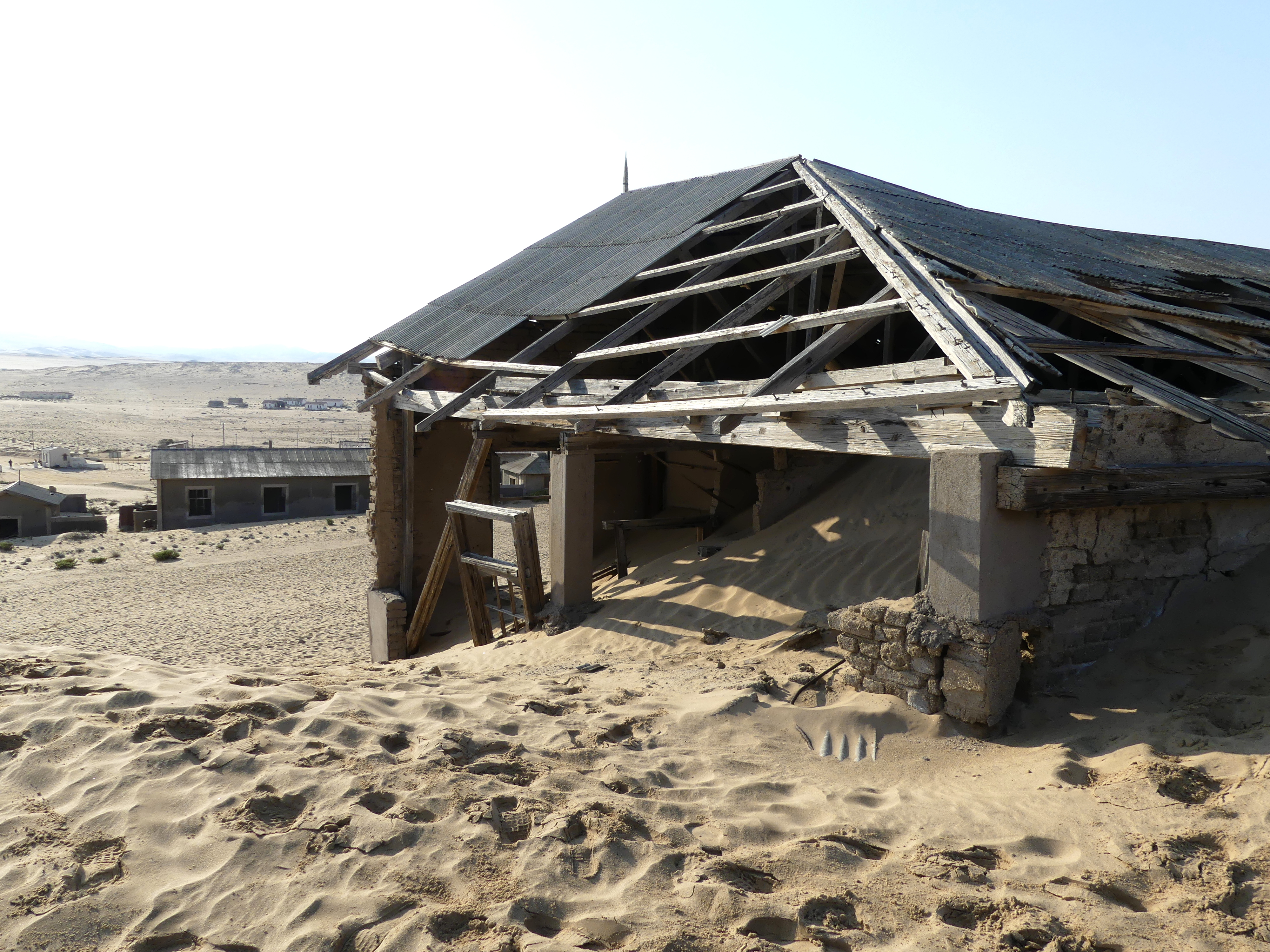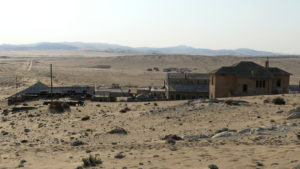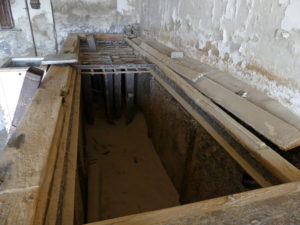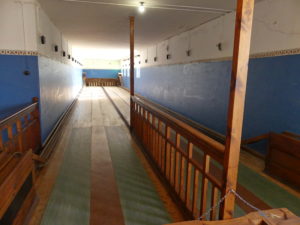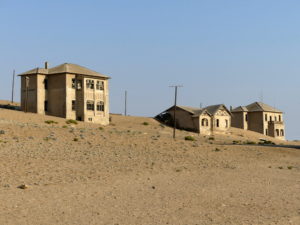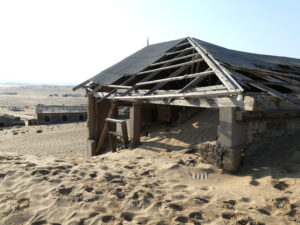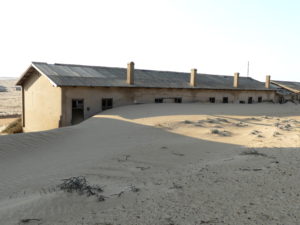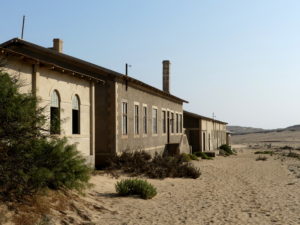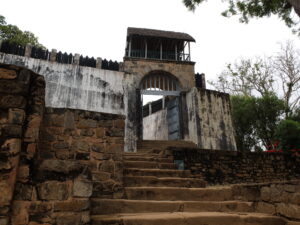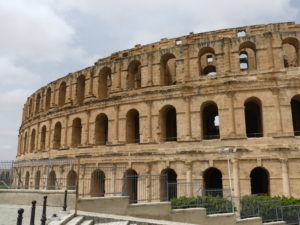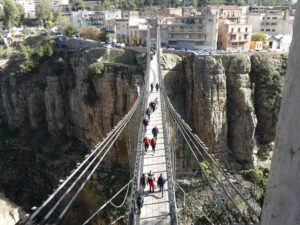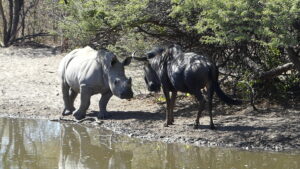In brief: A large company town where high-tech equipment is disused while mansions and main street vanish under dunes, the ghost town of Kolmanskop tells many tales today.
Mansions filling with hillocks of sand; breadmaking and icemaking facilities disused; sand dunes mounting the walls of main street shops; tourist visits and curios. This is today at Kolmanskop, near Germanic Luderitz, one of the many abandoned “ghost” towns left behind by the shifting discoveries of diamond riches within southern Namibia’s sand sea.
The site is still impressive whether wandering along the streets or clambering up the highest bluff, where oddly a dry swimming pool sometimes fills with water.
Ancient, turbulent volcanic activity below produced the diamonds, which progressively emerged, spreading down the dry washes during periods of desert rains and flooding.
Our visit revealed Kolmanskop’s fascinating history. 1200 people once lived and worked here, not digging down deep, but actually scraping the sands for the diamonds. Bakeries, icemakers and other shops supplied them a daily allotment of such necessities.
These are the remnants of 1930s state-of-the-art ice-making equipment. In addition to the daily ice allotments, this facility provided cold air to the butchery next door to preserve meats.
Skittles lanes at the Recreation Center
An exemplary medical clinic with x-ray equipment and trained staff cared for them. They entertained themselves at a recreation center with skittle lanes, gymnastic equipment and staged productions.
The operations manager, chief engineer, and other head guys lived in spacious houses that are now being reclaimed, in part, from the relentless waves of the sand dunes.
And this is what the whole town would look like without restoration effort. The mine manager lived here.
By the 1950s, disused Kolmanskop was abandoned for good, as the diamond mining shifted farther south of Luderitz toward the Orange River. That region is the Sperrgebiet, a zone forbidden to anyone without pre-clearance and formal passes.
There, at Oranjemund, a jointly owned company called NamDeb (Namibia and DeBeers) still scrapes the sands as in the past, and divers descend into the ocean where the river has long deposited its crystalline riches.
But back here at Kolmanskop, waves of sand still wash over the shops on main street, though NamDeb funding (which is also used to restore many of the old Germanic buildings in Luderitz) helps keep things under control for tourism. (See the post about the Germanic towns.)
The Deb part of the name, the DeBeers Company, was originally founded by none other than Cecil Rhodes, southern Africa’s most famous entrepreneur and politician.
(Also, for more pictures from Namibia, CLICK HERE to view the slideshow at the end of the itinerary page.)


